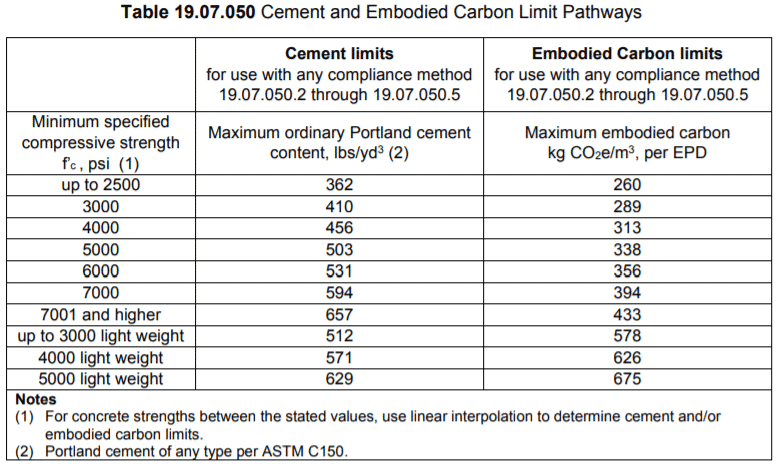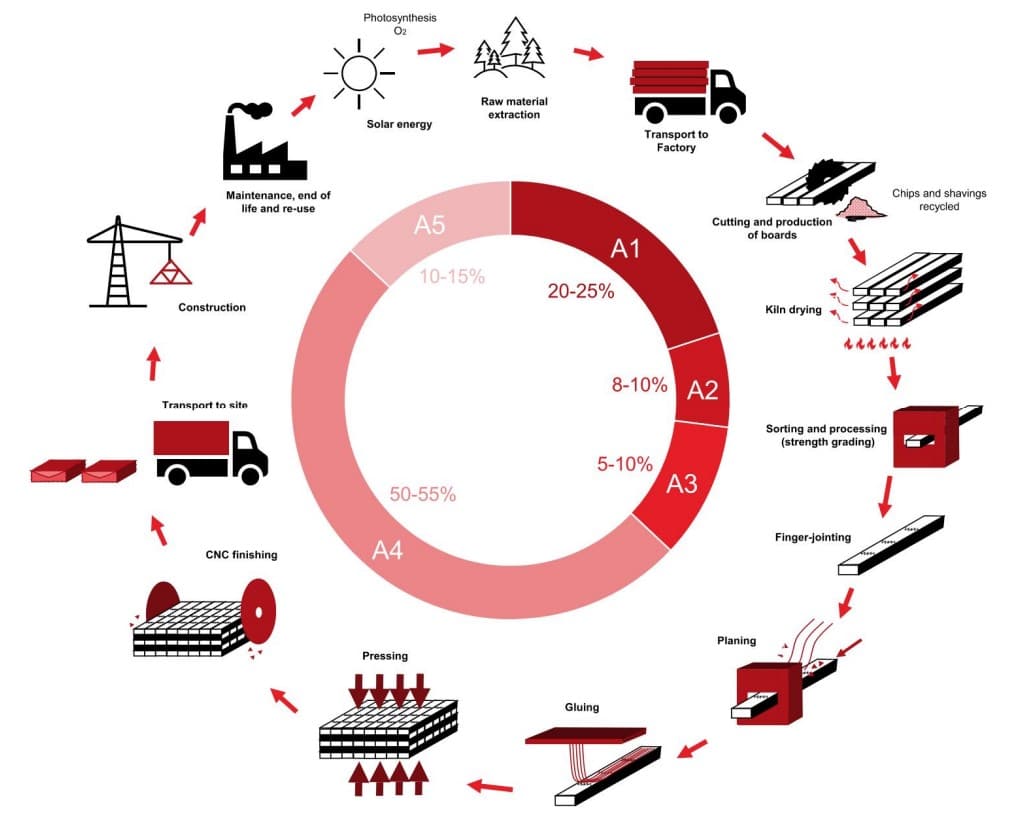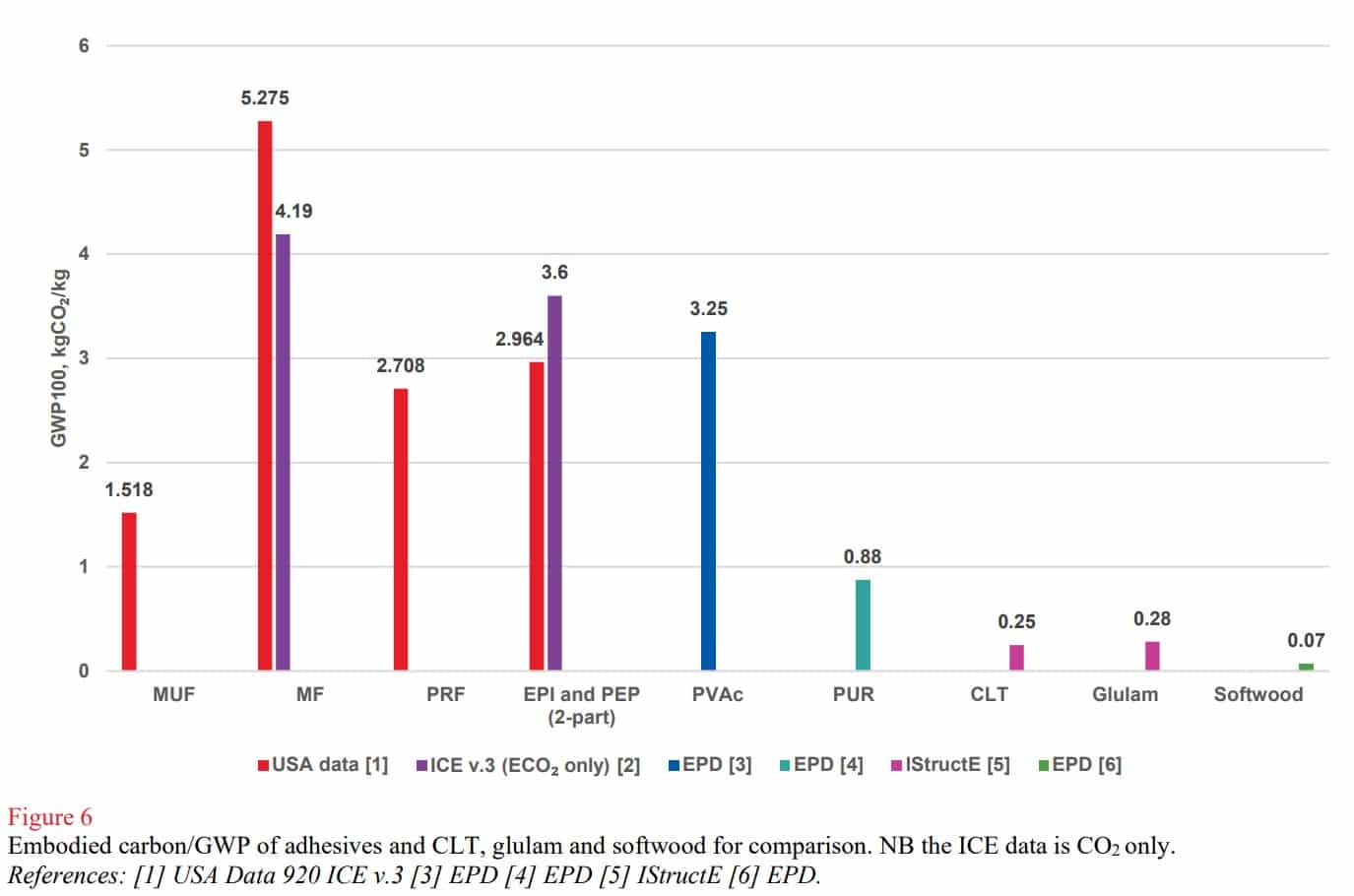Specify Sustainable Forest Management Practices
The net carbon benefit of wood products varies greatly with different forest management practices. Poor forest management practices (e.g., logging on illegal or protected land and clearing of forest for non-forest use) can lead to significant carbon emissions in addition to other negative environmental impacts on ecosystem and forest health. Sustainable forest management practices can vary regionally as different jurisdictions attempt to balance ecosystem health, forest resilience, biodiversity, and community needs. A well managed forest can lead to win-win scenarios of maximizing ecosystem health and minimizing emissions into the atmosphere. It is crucial that sustainable forest management is a core criteria for the procurement of sustainable wood products.
According to Think Wood, assurance for timber harvested sustainably can be provided by forest certification, responsible fiber sourcing standards, and/or Best Management Practices (BMPs, developed by every U.S. state). Currently, it is common practice among green building designers to specify certified wood (common programs include FSC, SFI, ATFS, and PEFC) as a means of assuring a baseline of sustainable forest management practices. State-developed Best Management Practices may not be as stringent as the requirements of forest certification, but a few strong examples of state codified BMPs include Oregon’s Forest Production Laws: An illustrated manual, Forest Practices Illustrated: A simplified guide to forest practices rules in Washington State and California’s Forest Practices Act.
While forest certification is often seen as having a high level of quality assurance for sustainable forest management, direct climate benefits are not necessarily assured by wood certification since these programs are only recently beginning to specifically address climate mitigation. Additionally, certified products may come with a cost premium. Smaller forest owners and public forests can also demonstrate exceptional, sustainable forest management practices, but may not have the financial means for acquiring certification. The Climate Smart Wood Group provides guidance on additional criteria for climate-smart forestry operations outside of certification which includes non-industrial timber producers such as “US federal, indigenous or tribal, non-profit organizations and land trusts, and family forest owners.” Other recommendations are sourcing from ecological forestry operations where “restoration is occurring to enhance ecological resilience and integrity (which) by definition offer many climate-smart benefits,” and from forests with above-business-as-usual regulations and practices. Examples of the latter include forests governed by Habitat Conservation Plans and those that are third-party-certified carbon projects.
Given the complexity of wood sourcing impacts and challenges with transparency and traceability, practitioners are encouraged to engage with local foresters who are trained, deeply knowledgeable about local forest needs, and can help identify wood sources from forest management operations. Along with source forest disclosure as described in the previous section, it is recommended to request the disclosure of forest management practices.
While there is an ISO Standard (ISO 38200:2018) setting requirements for the supply chain of wood products, there is currently no consensus or widely-accepted standard for sustainable forest management practices. However, there are some clear wins for sustainable wood procurement that practitioners can consider. This includes salvaged and reclaimed wood products (more detail in next section), and feedstocks that are byproducts of targeted harvest, such as small diameter trees not suitable for typical dimension lumber, as part of forestry operations to improve forest health (some examples include Vaagen Brothers Lumber in Washington and Timber Age Systems in Colorado).
Recommendations:
- Request information about forest management practices from manufacturers for wood products.
- Avoid illegally sourced wood and wood sourced from deforested lands, old growth forests, and protected lands.
- Proactively engage with forest managers and sawmills, with support from the project team (client, designers, and contractors), to uncover opportunities for available feedstock as byproducts of local forest and ecosystem needs.
- Evaluate sustainable forest management practices against criteria provided by forestry experts, like the Climate Smart Wood Group procurement guide.
- Seek indicators of sustainable forest management practices such as forest certification, responsible fiber sourcing standards, Best Management Practices, ecologically-motivated forestry operations, and climate-smart forestry operations from non-industrial timber producers such as the US Forest Service, indigenous or tribal communities, non-profit organizations, and family forest owners.




